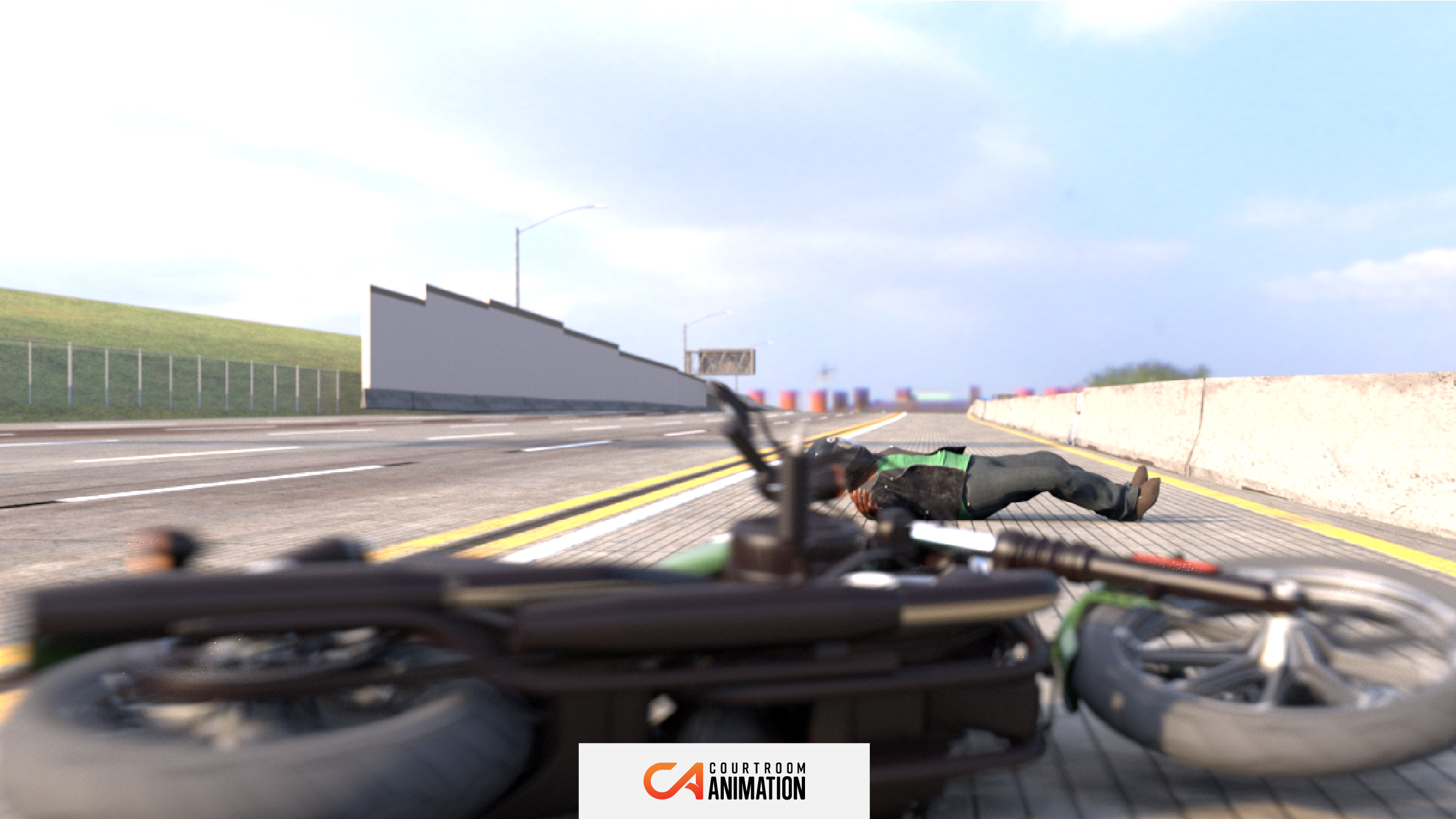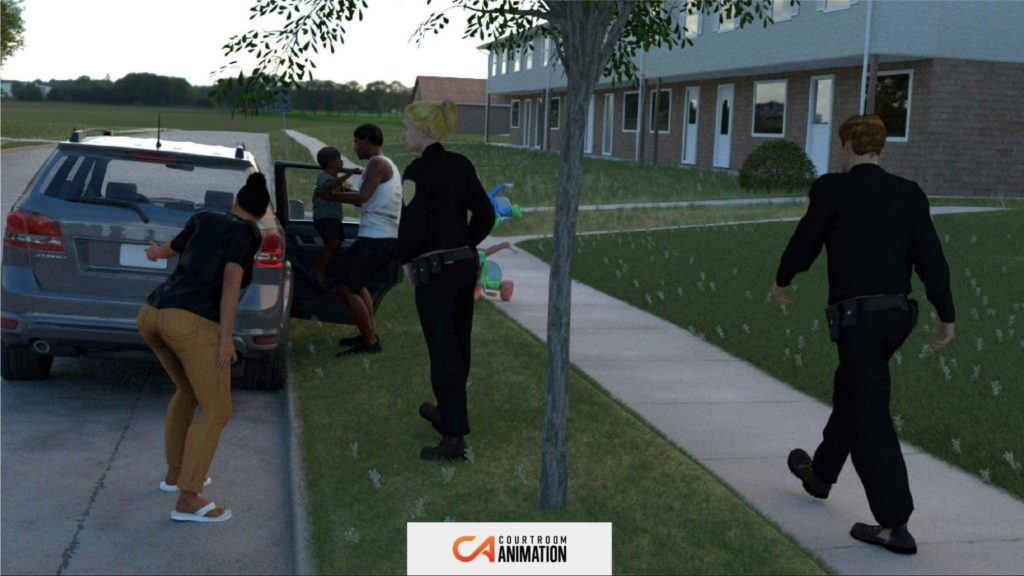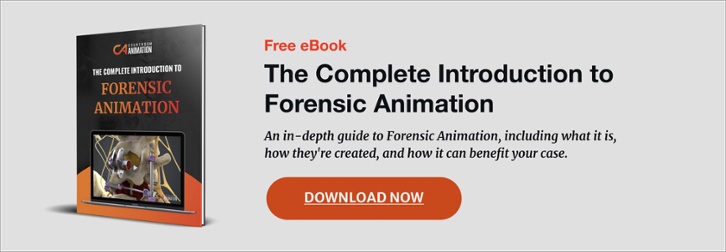
What are the most successful techniques that civil attorneys use to land favorable verdicts?
Of course, lots of planning and preparation is a key piece. This includes finding exceptional expert witnesses, developing a compelling trial narrative, preparing for the counter attacks of the opposing party, and even visiting the courtroom itself.
But what about using the latest legal visuals, such as a demonstrative exhibit, to tell your client’s story?
“To become better storytellers, lawyers need to leave the insulated world of legal practitioners and study what makes other professional storytellers effective.”
– Chris Arledge, Advocacy Instructor and Managing Partner at Ellis George Cipollone O’Brien Annaguey LLP
In today’s modern world of technology-savvy jurors, it’s important to keep them visually stimulated while explaining your case. An American Bar Association survey found that jurors are often confused, bored, frustrated and overwhelmed by complex or technical facts. Other research found that a juror’s average attention span is only about seven minutes.
That’s why demonstrative trial exhibits are used to combat short attention spans. Demonstrative visuals increase a juror’s rate of information retention from 10 percent to 87 percent. And for an attorney whose case relies on a focused and engaged jury, this could be the key to your desired verdict.
To help you reach that verdict, we have outlined three demonstrative exhibit techniques you can leverage. Let’s start with how to elevate your expert’s testimony.
1. Enhance Your Expert’s Testimony with Demonstrative Evidence
When your expert is giving their testimony, they already know all about the specialized data, materials, or concepts in your case. They know the terms, and have the skills to know how the pieces relates to each other.
The jury can’t say the same. How can you prepare to get them on the same page as the parties in your counsel as soon as possible?
Interested in a visual that can support a favorable verdict? Check out our free trial animation pricing guide!
With how technology has evolved in the past few decades, it’s no surprise that the jury will expect visual litigation aids. There’s a reason that visuals have triumphed over oral explanations with regards to information absorption.
A person’s senses are visually dominant. For example, in one case, the initial settlement offer was $450K. After presenting a car crash animation, the defense counsel increased their offer by $550K. This led to a total settlement of $1M and an over 20x return on investment!

Demonstrative Evidence Example From Courtroom Animation
If your expert leverages a visual and the opposing counsel’s expert does not, then it casts your party in a more favorable light. You appear more prepared and thus credible in the eyes of the jury.
Plus, if an expert verifies that a demonstrative exhibit is accurate, then it has a 99% chance of being legally admissible.
Leave a Lasting Impression During Closing Statements
As much as you might want to, you can’t force the jury to reach their own conclusions about your client. No best-selling novel starts with the author telling you about the end of the book and how you should feel about it.
That’s where a visual acts as a “show, not tell” tactic for your argument. It saves you repeating what you want the jury to think, and helps them remember crucial details.
“These are people who by and large have grown up on television. The day of the lawyers droning on is really gone. I think that jurors today, particularly the young ones, expect quickness and things they can see.”
–Gerald Lefcourt, Defense Lawyer
Sometimes adding a demonstrative exhibit to your trial presentation can turn out to be a last-minute decision. If you prepare your visual litigation strategy before the trial begins, then you have the opportunity to also leverage a visual in your opening statement.
This starts your case off on the best foot forward. If the opposing counsel had ample time to send over their objections, that means you have an opportunity to revise the demonstrative exhibit and use it throughout your presentation.
3. Create a Visual Narrative That Catches the Opposing Counsel Off Guard
If your case has a strong argument, but you present it in a way that does not connect with the jury or judge, then your opposing counsel might have the upper hand. In fact, when an argument is supported by a believable storyline and visuals, your audience may be more open to deciding in its favor.

Sample Demonstrative Exhibit Used to Convey Size of Malfunctioned Hydraulic Press
Building a narrative is all about how you frame your case. For example, in a direct examination, asking a background question such as, “What is your general educational background?” is not a strong introduction into your client’s story. Guide the jury to your desired outcome with emotions mixed with facts, and avoid only using straight up facts that can lose their attention.
While the opposing counsel has most likely seen the visual on the exhibition list and given any objections, they will not be prepared for your memorable narrative. Having evidence animation, or even legal graphics on a whiteboard, could have them rethinking their approach entirely.
How Will You Use a Demonstrative Exhibit For Your Next Case?
These three visual strategy approaches will help you determine which one could fit your next, or even current, case:
- Give your expert a visual to take their testimony up a notch
- Establish understanding and leave a memorable impression on the jury
- Create a visual narrative around your client that the opposing counsel can’t undermine
These techniques aren’t the only visual techniques a plaintiff or defense attorney can use, but they are effective. In today’s modern courtroom, visuals are expected, and help the judge or jury better determine liability. Overall, a demonstrative exhibit’s goal is to represent your case’s facts in an accessible and compelling manner.
Are you ready to take your trial presentation to the next level?
Get a no obligation animation or trial graphics quote from our experienced forensic animation team today!
